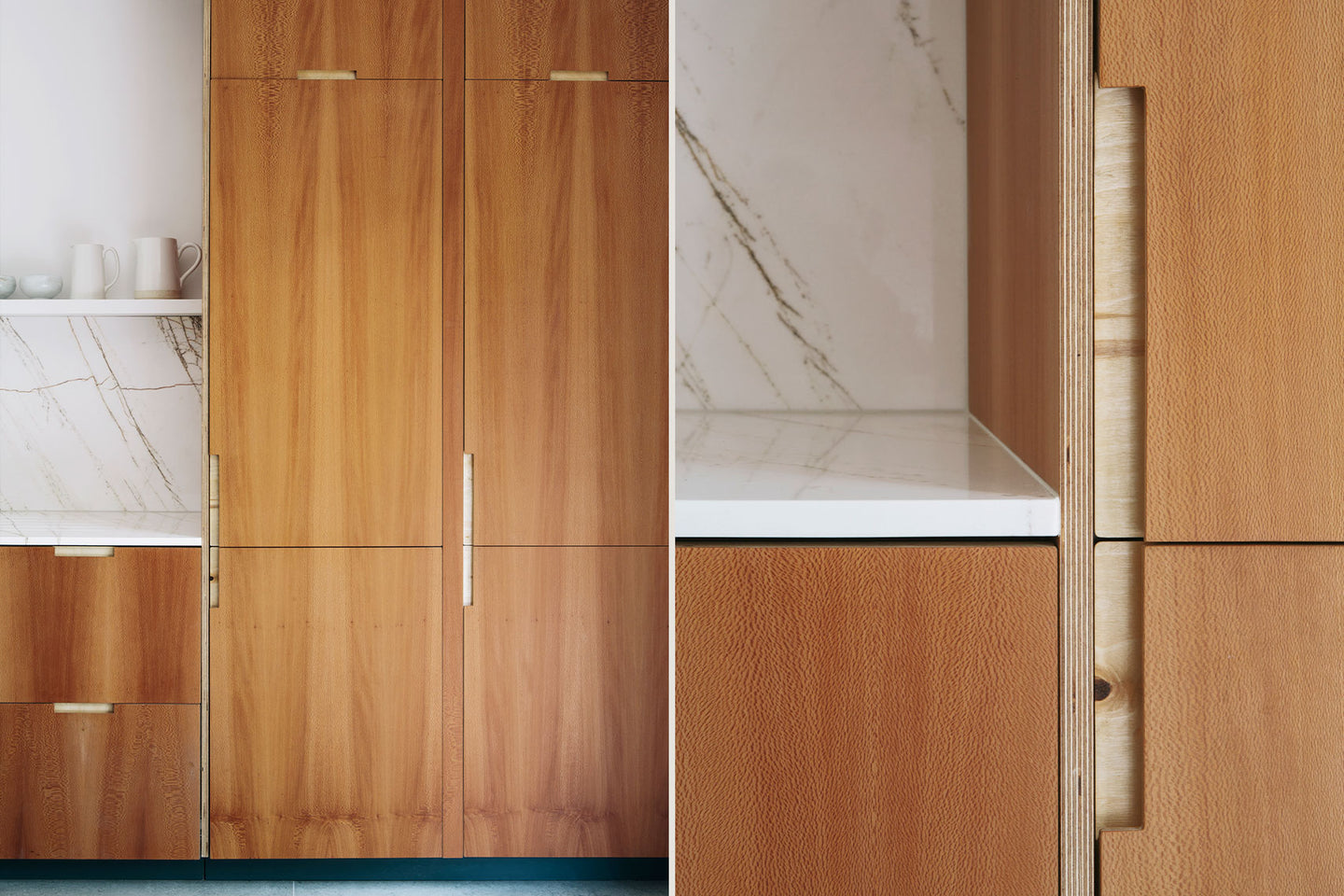I am the idiot,
I bought a house recently and have installed a kitchen (symphony kitchens) that I got free. I do a lot of general DIY but know nothing about cabinet making or woodwork in general. I wanted to replace the doors with Veneered Ply, initially finding some websites that make them, but most websites I've found make Ikea fitment ones and it felt both a waste to buy those and then cut new holes for brackets, but also I was surprised at the pricing so thought I would give it a go to make my own. Well I suppose not even making them as really I am talking about buying Veneered plywood cut to size and then just drilling the holes for the brackets myself to fit them.
The price of this is a fraction of buying doors from these websites though which has me worried I am missing something?
I've tried to do my research and have seen that both sides have to be veneered to avoid warping. But is there a step missing I'm not aware of? Currently I was going to contact Winwood as they have a nice range, and get a quote. But is it as simple as buying the cut to size veneered panel, drilling to fit the brackets and attaching them? I am possibly just over thinking this, but having spent a few days on this forum reading some lovely informational posts I've now realised there is so much more to working with wood than I realised so would like to make sure I don't screw up.
As for why ply and not MDF, I'm not actually sure. I could probably just do MDF instead. It was while searching for doors that I'd found pictures like the below, and I really liked the look of handles cut out of the door (although I'm guessing cutting that out is probably much harder than I think?).
Apologies if this is not the right place to post this and thanks in advance for any help.
Edit: Also have now learned that I can't use the I word referring to myself which was automatically replaced by silly person.

I bought a house recently and have installed a kitchen (symphony kitchens) that I got free. I do a lot of general DIY but know nothing about cabinet making or woodwork in general. I wanted to replace the doors with Veneered Ply, initially finding some websites that make them, but most websites I've found make Ikea fitment ones and it felt both a waste to buy those and then cut new holes for brackets, but also I was surprised at the pricing so thought I would give it a go to make my own. Well I suppose not even making them as really I am talking about buying Veneered plywood cut to size and then just drilling the holes for the brackets myself to fit them.
The price of this is a fraction of buying doors from these websites though which has me worried I am missing something?
I've tried to do my research and have seen that both sides have to be veneered to avoid warping. But is there a step missing I'm not aware of? Currently I was going to contact Winwood as they have a nice range, and get a quote. But is it as simple as buying the cut to size veneered panel, drilling to fit the brackets and attaching them? I am possibly just over thinking this, but having spent a few days on this forum reading some lovely informational posts I've now realised there is so much more to working with wood than I realised so would like to make sure I don't screw up.
As for why ply and not MDF, I'm not actually sure. I could probably just do MDF instead. It was while searching for doors that I'd found pictures like the below, and I really liked the look of handles cut out of the door (although I'm guessing cutting that out is probably much harder than I think?).
Apologies if this is not the right place to post this and thanks in advance for any help.
Edit: Also have now learned that I can't use the I word referring to myself which was automatically replaced by silly person.

































